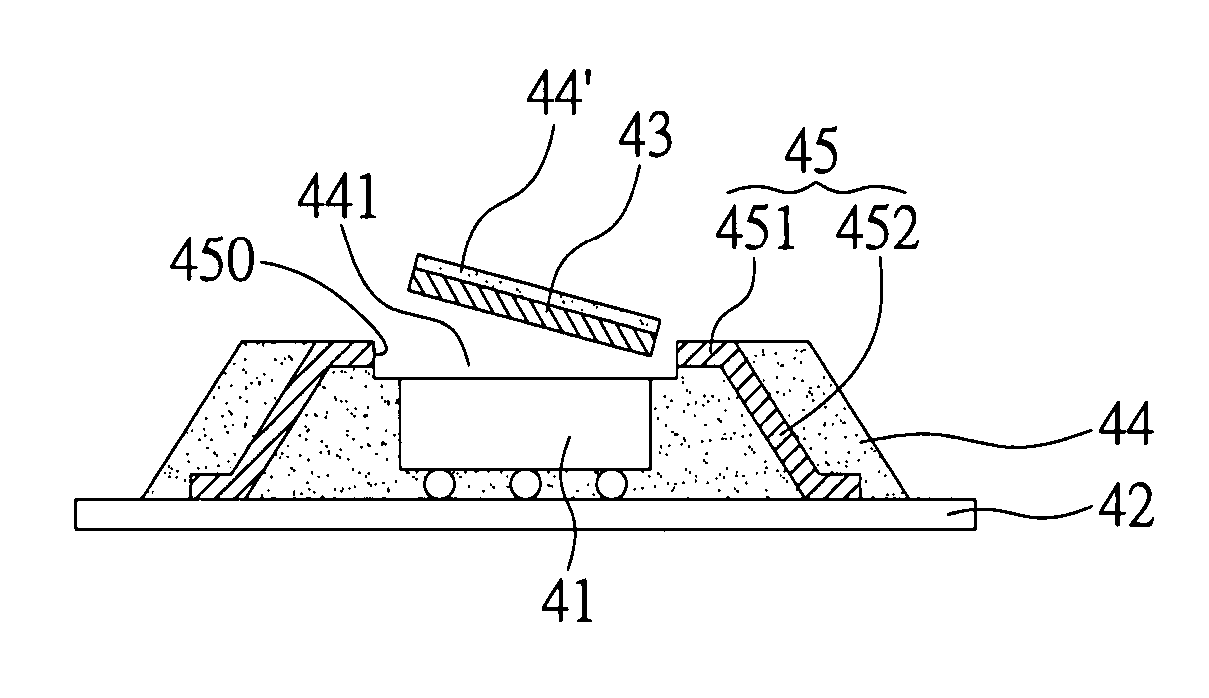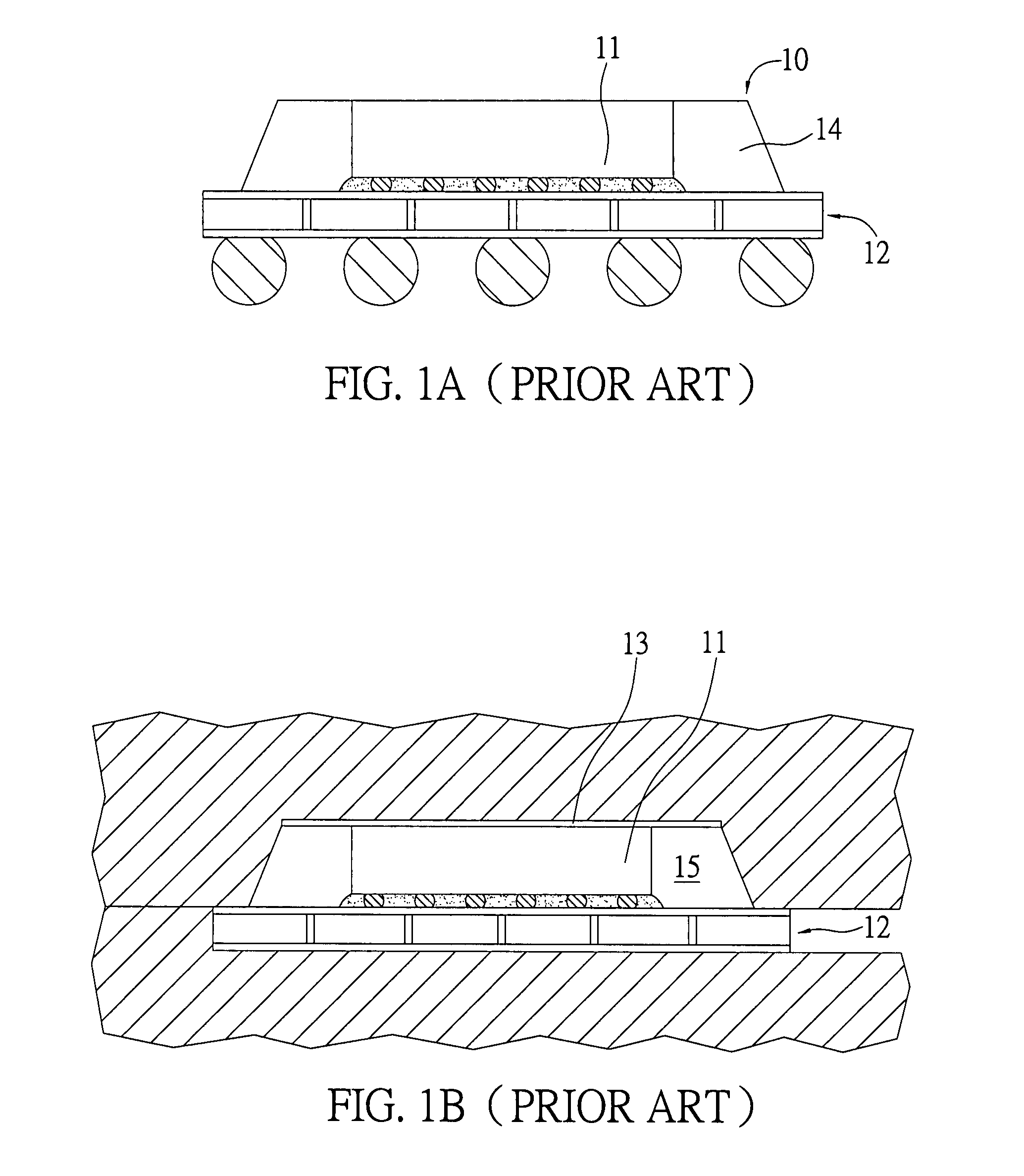Heat dissipating structure and method for fabricating the same
a technology of heat dissipation structure and semiconductor chip, which is applied in the direction of semiconductor/solid-state device details, semiconductor devices, electrical apparatus, etc., can solve the problems of large amount of heat produced by the active surface the difficulty of efficiently dissipating the heat to the exterior, and the impact of the electric performance of the semiconductor chip and the product stability, so as to prevent the cracking of the semiconductor chip, reduce the cost of cutting, and avoid the effect of the chip crack
- Summary
- Abstract
- Description
- Claims
- Application Information
AI Technical Summary
Benefits of technology
Problems solved by technology
Method used
Image
Examples
first embodiment
[0037]FIGS. 5A to 5F are diagrams showing a heat sink package structure and method for fabricating the same according to a first embodiment of the present invention.
[0038] As shown in FIG. 5A, a semiconductor chip 41 is mounted to and electrically connected to a chip carrier 42 through one surface thereof, and an interface layer 43 is formed on the other surface of the semiconductor chip 41.
[0039] The chip carrier 42 may be a BGA substrate or an LGA substrate. The semiconductor chip 41 may be such as a flip-chip semiconductor chip, the active surface of which is electrically connected to the chip carrier 42 through a plurality of conductive bumps 410.
[0040] The interface layer 43 may be a P.I. tape adhered to the semiconductor chip 41, or an epoxy resin coated on semiconductor chip 41, or an organic layer made of such as wax formed on the semiconductor chip 41. Thus, the adhesion between the interface layer 43 and the encapsulant to be formed subsequently for encapsulating the se...
second embodiment
[0046]FIGS. 6A and 6B are sectional diagrams of a heat sink package structure according to a second embodiment of the present invention. In the present embodiment, an external heat slug 56 is disposed on the exposed surface of the semiconductor chip 51. As shown in FIG. 6A, the external heat slug 56 has shape of a flat plate. In addition, as shown in FIG. 6B, a plurality of fins can be formed on the external heat slug 56 for improving heat dissipating efficiency.
third embodiment
[0047]FIG. 7 is a sectional diagram showing a heat sink package structure according to a third embodiment of the present invention. In the present embodiment, a wire-bonding semiconductor chip 61 is mounted to a chip carrier 62 through its non-active surface, and electrically connected with the chip carrier 62 through a plurality of bonding wires 67. A material layer 68 such as a scraped chip or a heat dissipating element is mounted on the active surface of the semiconductor chip 61. Further, an interface layer (not shown) is mounted on the material layer 68. Thus, after the first heat dissipating element 65 is disposed on the chip carrier 62 and the molding process is performed, both the interface layer and the encapsulant on the interface layer can be removed so as to form a recess structure 641 for exposing the material layer 68 from the encapsulant 64, thereby increasing heat dissipating efficiency of the semiconductor chip 61.
[0048] It should be noted that the material layer 6...
PUM
 Login to View More
Login to View More Abstract
Description
Claims
Application Information
 Login to View More
Login to View More - R&D
- Intellectual Property
- Life Sciences
- Materials
- Tech Scout
- Unparalleled Data Quality
- Higher Quality Content
- 60% Fewer Hallucinations
Browse by: Latest US Patents, China's latest patents, Technical Efficacy Thesaurus, Application Domain, Technology Topic, Popular Technical Reports.
© 2025 PatSnap. All rights reserved.Legal|Privacy policy|Modern Slavery Act Transparency Statement|Sitemap|About US| Contact US: help@patsnap.com



